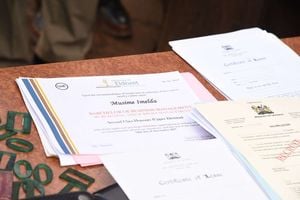Twitter storm as New York Times publishes bodies of Dusit attack

Security forces arrive at 14 Riverside Drive that was attacked by suspected terrorists on January 15, 2019. PHOTO | SALATON NJAU | NATION MEDIA GROUP
Kenyans online are up in arms against the New York Times after it published images that show dead victims of the terror attack at Dusit complex in Westlands, Nairobi.
The image showed bodies strewn inside the Secret Garden Café.
Some social media users in Kenya took to Twitter and asked the US-based paper to remove the photo.
"Very disturbing images published by @GettyImages, accredited to @kabirdhanji, from the Riverside/Dusit incident. Others posted by @nytimes attributed to Khalil Senosi (for @AP) in an article by @kimidefreytas. Absolutely distasteful, disgusting and deplorable. An utter disgrace," posted Fadhili Kanini.
New York Times writer Kimiko de Freytas-Tamura, who says is the incoming New York Times bureau chief for East Africa, asked Kenyans to direct their anger to the photo desk and NYT.
“As I’ve said, I don’t choose the photos. Please direct your anger to our photo department. Thank you,” she responded to one of the tweets.

As the protests increased, she was forced to rethink her responses to state that she had notified the relevant desk.
Kimiko tried to explain that it was Times’ policy to publish images of casualties as long as no faces were shown.
“It is Times policy to post pictures of casualties – as long as their faces are not shown – in terror attacks whether they happen in Europe and the United States. I’m not being dismissive, just explaining what the Times does,” she wrote.
Kimiko after a back and forth with Kenyans online penned an apology writing, “I apologize on behalf of @nytimes and @nytphoto for causing anger and anguish over the photos that have been published with our reporting. Thank you.”





